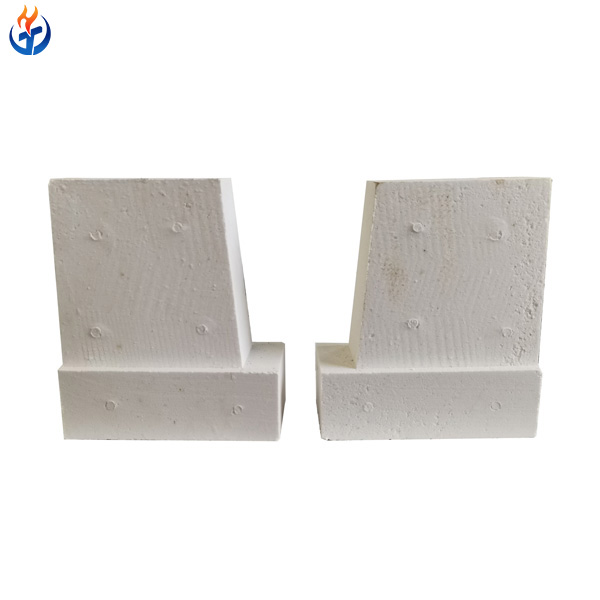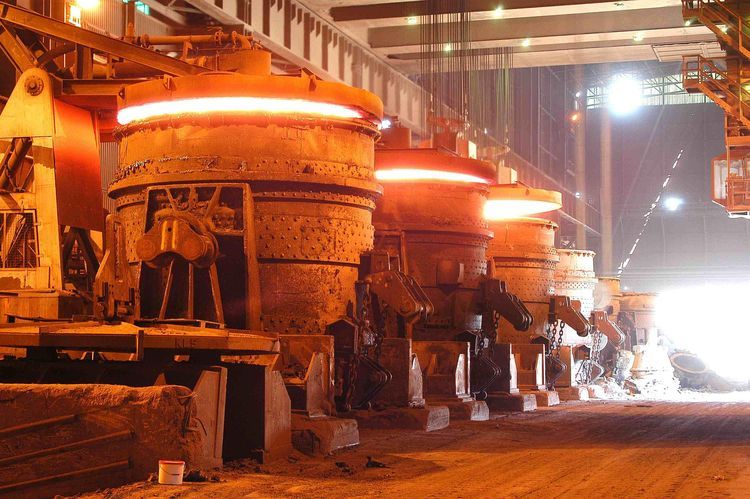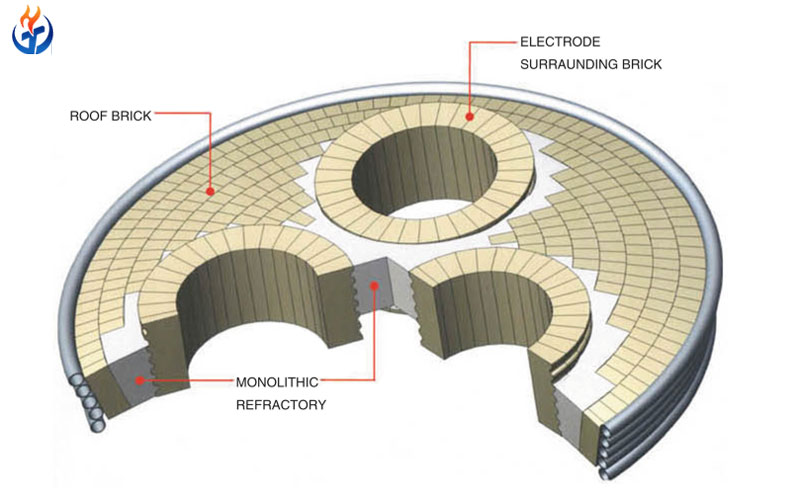For high-temperature industrial furnaces, choosing the right refractory material is crucial for ensuring durability, thermal stability, and long-term energy efficiency. Among the many options available, Corundum Mullite Bricks stand out as a premium refractory solution. Known for their exceptional thermal shock resistance, high refractoriness, and chemical stability, these bricks are widely used in kilns across industries such as ceramics, metallurgy, glass, and petrochemicals.
In this article, we will explore the composition, advantages, and specific applications of Corundum Mullite Bricks in different types of kilns, helping you understand why they are often considered the preferred lining material for demanding high-temperature environments.

What Are Corundum Mullite Bricks?
Corundum Mullite Bricks are high-performance refractory products made from alumina (Al₂O₃) and mullite (3Al₂O₃·2SiO₂) as the main raw materials. They are typically produced by sintering or by combining synthetic mullite and fused corundum under high temperatures.
Main composition: 60–90% alumina, with mullite and a small amount of silica.
Bulk density: around 2.6–3.0 g/cm³
Refractoriness: above 1790°C
Thermal conductivity: moderate, ensuring good insulation and structural integrity.
The combination of corundum (for hardness and refractoriness) and mullite (for thermal shock resistance and low creep) gives these bricks a unique balance of mechanical strength, chemical inertness, and thermal stability.
Key Features and Advantages
Corundum Mullite Bricks are engineered to withstand the harshest furnace conditions. Their major benefits include:
Excellent Thermal Shock Resistance
Mullite in the composition helps reduce the thermal expansion rate, allowing the brick to resist repeated heating and cooling cycles without cracking.High Refractoriness and Load-Bearing Capacity
The high alumina content ensures a softening point under load (RUL) exceeding 1700°C, making the bricks suitable for structural zones of kilns.Strong Chemical Resistance
These bricks can resist erosion from slags, alkalis, and acidic gases — an important advantage in metal and cement production.Low Creep and Long Service Life
Even under constant high temperatures, Corundum Mullite Bricks maintain dimensional stability, reducing maintenance frequency.Good Thermal Insulation
Despite their density, their microstructure helps retain heat effectively, improving kiln efficiency.
Applications of Corundum Mullite Bricks in Different Kilns
(1) Ceramic Kilns
In the ceramic industry, kilns operate continuously at high temperatures between 1300°C and 1750°C. Corundum Mullite Bricks are ideal for:
Firing zones of roller kilns and tunnel kilns.
Roof and burner areas where flame and heat intensity are highest.
Sagger and kiln furniture supports, where both load-bearing and thermal stability are required.
These bricks help reduce thermal deformation and maintain a consistent firing atmosphere, improving product quality and energy efficiency.
(2) Glass Furnaces
Glass melting furnaces are highly corrosive due to alkali vapors and molten glass. Corundum Mullite Bricks are used in:
Regenerator checkers, melting tanks, and superstructures exposed to volatile alkalis.
Crown and flue areas, where high temperatures (up to 1650°C) and aggressive gases can degrade conventional refractories.
The bricks’ strong resistance to Na₂O vapors and their low thermal expansion make them a reliable choice for maintaining furnace stability over long service cycles.
(3) Cement Rotary Kilns
In cement production, rotary kilns expose the refractory lining to alkali salts, clinker dust, and thermal stress. Corundum Mullite Bricks are especially suitable for:
Transition zones and cooling zones, where temperature fluctuations are frequent.
Burning zone front ends, where they can withstand erosion from clinker and chemical reactions.
Their combination of wear resistance and thermal shock stability ensures a longer operational life and reduced downtime.
(4) Iron and Steel Industry Furnaces
Steel production involves numerous high-temperature units such as blast furnaces, reheating furnaces, and ladles. Corundum Mullite Bricks are commonly applied to:
Heating furnace roofs and walls, where radiant heat and oxidation are severe.
Hot blast stove combustion chambers.
Ladle and tundish linings for clean steel production, preventing contamination from silica-rich refractories.
Their high purity ensures less reaction with molten metal and slag, maintaining steel quality.
(5) Non-Ferrous Metal Furnaces
In copper, aluminum, and zinc smelting, refractory linings are constantly attacked by oxide slags and volatile metals. Corundum Mullite Bricks provide excellent corrosion resistance and structural strength in:
Anode furnace walls
Refining furnaces
Holding and melting furnaces for aluminum alloys
The low wetting by molten metal helps reduce contamination and extend the service interval between relinings.
(6) Petrochemical and Chemical Kilns
In petrochemical reactors, reformers, and carbon black furnaces, temperatures often exceed 1400°C and involve oxidizing or reducing atmospheres.
Corundum Mullite Bricks serve as lining materials for thermal reactors, waste incinerators, and synthetic gas reformers, providing:
Excellent corrosion resistance to acids and alkalis.
Low contamination risk for high-purity products.
Long service life under alternating oxidizing and reducing conditions.
Comparison with Other Refractory Bricks
| Type of Brick | Max Temperature (°C) | Strength | Thermal Shock Resistance | Alkali Resistance | Typical Applications |
|---|---|---|---|---|---|
| Fireclay Brick | 1300–1400 | Moderate | Moderate | Low | General furnaces |
| High Alumina Brick | 1500–1700 | High | Moderate | Good | Cement kilns, furnaces |
| Corundum Mullite Brick | 1750+ | Very High | Excellent | Excellent | Ceramic, glass, and metallurgical kilns |
This comparison clearly demonstrates why Corundum Mullite Bricks are chosen for the most demanding parts of high-temperature equipment.
Installation and Maintenance Tips
To achieve the best performance, several factors should be considered during installation and operation:
Use proper mortar that matches the thermal expansion coefficient of the brick.
Preheat slowly before full operation to allow gradual thermal expansion.
Inspect joints regularly for cracks caused by mechanical stress or chemical attack.
Avoid direct contact with high-flux molten materials unless a protective layer or castable lining is used.
Regular inspection and proper installation can significantly extend the lifespan of the refractory structure.
Conclusion
Corundum Mullite Bricks represent one of the most advanced refractory solutions for high-temperature industrial furnaces. Their outstanding resistance to thermal shock, chemical corrosion, and mechanical wear makes them indispensable in various kilns — from ceramic and glass furnaces to metal and petrochemical processing units.
For industries seeking to improve energy efficiency, product quality, and operational reliability, Corundum Mullite Bricks are a wise investment that ensures long-term performance under the harshest conditions.
Reach out to Xintai Refractory today for professional guidance and premium corundum mullite refractory bricks, designed to enhance your ceramic kiln lining with reliable performance, improved energy efficiency, and extended service life.



